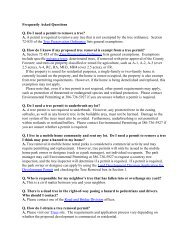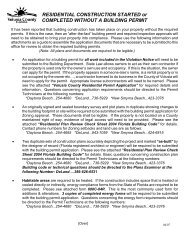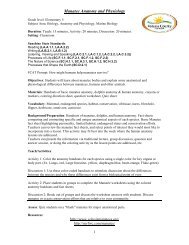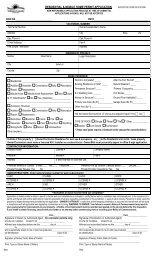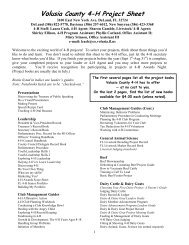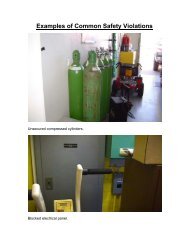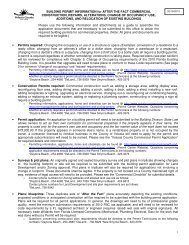Local mitigation strategy (LMS) - Volusia County Government
Local mitigation strategy (LMS) - Volusia County Government
Local mitigation strategy (LMS) - Volusia County Government
Create successful ePaper yourself
Turn your PDF publications into a flip-book with our unique Google optimized e-Paper software.
SECTION 5: HAZARD PROFILES5.13 TSUNAMI5.13.1 BackgroundThe word tsunami is Japanese and means “harbor wave.” A tsunami is a wave or series of waves mostcommonly caused by an earthquake or by a large undersea landslide, volcanic eruption or otherundersea disturbance. From the area of disturbance, tsunami waves will travel outward in all directionsand can originate hundreds or even thousands of miles away from affected coastal areas.In the open ocean, tsunami waves travel at speeds of up to 600 miles per hour but are too small to beobserved, and the time between wave crests may be five to 90 minutes. As the waves approach shallowcoastal waters, they slow down and may rise to several feet or, in rare cases, tens of feet. Although thewaves slow down as they reach shallow water, the energy remains constant and when tsunami wavescrash into the shoreline they may be as high as 100 feet. The first wave is almost never the largest;successive waves may be spaced tens of minutes apart and continue arriving for many hours. Thecoastal areas at greatest risk are less than 50 feet above sea level and within one mile of the shoreline.Tsunamis can cause great loss of life and property damage where they come ashore, and most tsunamideaths are the result of drowning. Associated risks include water pollution, damaged gas lines, andflooding.Tsunami activity is a greater risk along the Pacific Rim states (Washington, Oregon, California Alaska andHawaii), but is still possible along the East Coast of the United States. In fact, as many as 40 tsunami ortsunami-like events have been reported along the East Coast since the early 1600s. Additionally, modelsand methodologies do not currently exist to accurately assess the tsunami hazard as it would relate toan inland community along the East Coast.Although an East Coast tsunami would be rare, two off-shore areas are currently under investigationaccording to a 2002 National Geophysical Data Center report. One area of interest consists of largecracks northeast of Cape Hatteras, North Carolina that could foretell of the early stages of anunderwater landslide resulting in a tsunami. The other area of interest consists of submarine canyonsapproximately 150 kilometers from Atlantic City, New Jersey. Significant factors for consideration withregard to these areas are recent discoveries along the East Coast that demonstrate the existence ofpressurized hydrates and pressurized water layers in the continental shelf. This has producedspeculation among the scientific community on possible triggers that could cause sudden and perhapsviolent releases of compressed material that could factor into landslide events and the resulting tsunamiwaves.In August 2008, a qualitative tsunami hazard assessment prepared by NOAA and USGS indicated that theU.S. Atlantic coast has a very low tsunami risk 17 . This qualitative assessment was based on NationalGeophysical Data Center (NGDC) and United States Geological Survey (USGS) databases. Specifically,Atlantic coast tsunami vulnerability was deemed very low based on very low wave runup, low tsunamihazard frequency, and no reported fatalities.17 NOAA and USGS. 2008. U.S. States and Territories National Tsunami Hazard Assessment: Historical Recordand Sources for Waves. August 2008.<strong>Volusia</strong> <strong>County</strong> Multi-jurisdictional <strong>Local</strong> Mitigation StrategyFebruary 20105:62



